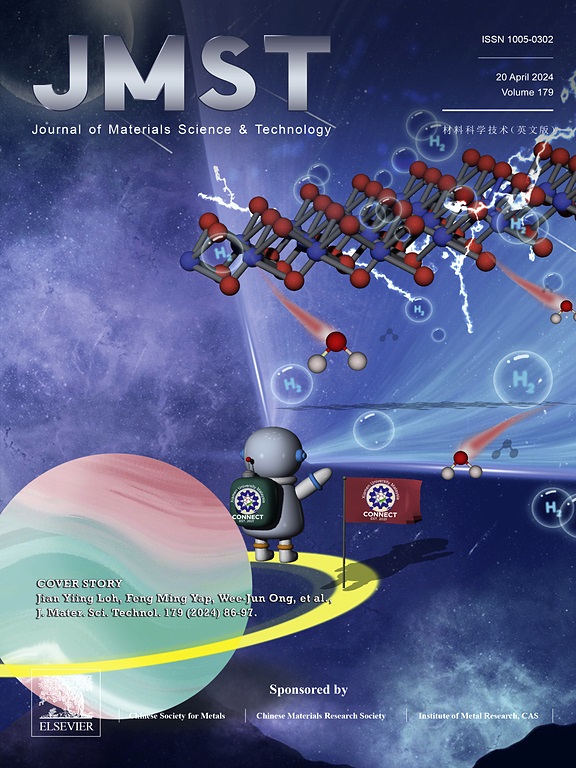Extremely low temperature mechanical behavior of in-situ oxide containing 304L stainless steel fabricated by laser powder bed fusion
IF 11.2
1区 材料科学
Q1 MATERIALS SCIENCE, MULTIDISCIPLINARY
引用次数: 0
Abstract
This study investigates the mechanical properties and microstructure of SS304L stainless steel (SS) fabricated via laser powder bed fusion (LPBF) under controlled oxygen levels (0.2%) at both room and cryogenic temperatures (77 K and 4 K). Experimental results show that the LPBF SS304L exhibits significant improvements in yield strength (YS), with an increase of ≈336 MPa at room temperature and up to ≈398 MPa at 4 K compared to wrought SS304L. Additionally, the current LPBF SS304L demonstrates an extra ≈64 MPa YS strengthening over previous LPBF SS304L data at room temperature. These strength enhancements are primarily attributed to oxide dispersion hardening, promoted by the controlled oxygen level, alongside grain boundary strengthening and dislocation hardening, without significant ductility loss. Furthermore, strain-induced martensitic transformation (SIMT) was absent at room temperature and reduced at cryogenic temperatures compared to wrought SS304L, likely due to high dislocation density and nitrogen-stabilized austenite. A jerk flow observed at 4 K is attributed to adiabatic heating from plastic deformation, consistent with the low thermal conductivity. Finite element simulations reveal a short residence time (0.0137 s) for molten material during the LPBF process, with oxide particles forming predominantly through heterogeneous nucleation at the melt pool surface, and uniformly distributed by Marangoni convection. These findings provide key insights into developing LPBF parameters for enhanced mechanical performance of SS304L for cryogenic and ambient temperature applications.

求助全文
约1分钟内获得全文
求助全文
来源期刊

Journal of Materials Science & Technology
工程技术-材料科学:综合
CiteScore
20.00
自引率
11.00%
发文量
995
审稿时长
13 days
期刊介绍:
Journal of Materials Science & Technology strives to promote global collaboration in the field of materials science and technology. It primarily publishes original research papers, invited review articles, letters, research notes, and summaries of scientific achievements. The journal covers a wide range of materials science and technology topics, including metallic materials, inorganic nonmetallic materials, and composite materials.
 求助内容:
求助内容: 应助结果提醒方式:
应助结果提醒方式:


